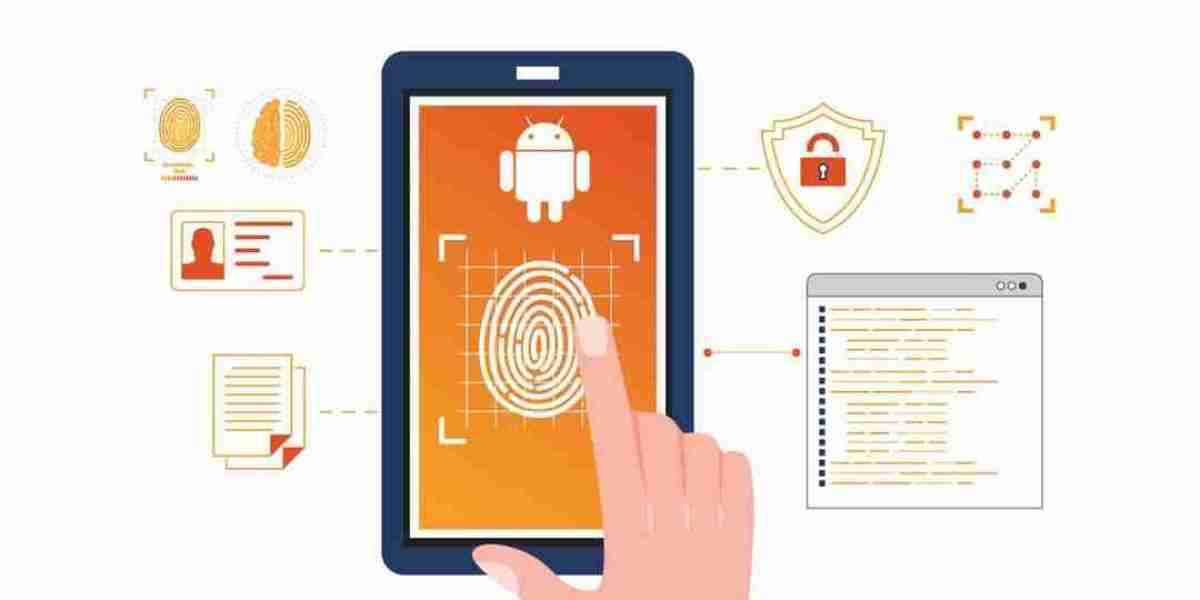As digital security continues to advance, biometric authentication has emerged as one of the most powerful tools for identity verification. Leveraging unique physiological traits such as fingerprints, facial patterns, iris scans, and voice recognition, biometric technologies are reshaping how businesses, governments, and individuals secure their data and systems. However, as the adoption of biometrics accelerates, so do the threats and vulnerabilities associated with its implementation.
This article explores the key threats facing the biometric authentication market, examining technical, ethical, legal, and operational risks that could hinder market growth and public trust.

? Overview of the Biometric Authentication Market
The global biometric authentication market is expected to grow from $45 billion in 2024 to over $100 billion by 2030, driven by widespread adoption in finance, healthcare, law enforcement, travel, and mobile devices. Despite its promising outlook, the industry faces a complex web of threats that must be addressed to maintain integrity, security, and user confidence.
? Key Threats in the Biometric Authentication Market
1. Data Breaches and Biometric Theft
Unlike passwords, biometric traits are permanent. If biometric data such as fingerprints or facial scans are stolen, they cannot be changed. High-profile breaches, like the 2015 U.S. Office of Personnel Management hack where millions of fingerprint records were compromised, highlight the irreversible consequences of poor data protection.
Threat Impact: Long-term loss of trust, identity fraud, and legal ramifications.
Mitigation: Use of encrypted storage, on-device processing, and decentralized identity frameworks.
2. Spoofing and Presentation Attacks
Biometric systems are vulnerable to spoofing, where attackers use fake fingerprints, photos, or voice recordings to bypass security. Advanced threats include 3D-printed masks, silicone fingers, or AI-generated voice clones.
Threat Impact: Unauthorized access to secure systems or accounts.
Mitigation: Implementing liveness detection, behavioral biometrics, and multi-factor authentication.
3. Algorithm Bias and Inaccuracy
Many biometric algorithms exhibit bias based on race, gender, or age, leading to higher false rejection or acceptance rates for certain groups. This not only undermines security but also raises serious ethical and legal concerns.
Threat Impact: Discrimination, unequal access, and reputational damage.
Mitigation: Ensuring diverse data training sets and regular algorithm audits.
4. Privacy and Consent Issues
Biometric data is highly personal. Collecting, storing, or sharing this data without clear consent can violate privacy laws such as GDPR, CCPA, and HIPAA. Consumers are increasingly concerned about who has access to their data and how it is being used.
Threat Impact: Regulatory fines, lawsuits, and loss of consumer trust.
Mitigation: Transparent policies, user opt-in mechanisms, and data minimization practices.
5. Over-Reliance and System Failures
Biometric systems can fail due to hardware malfunctions, environmental factors (e.g., dirty sensors), or changes in user appearance (e.g., injuries, aging). Over-reliance on biometrics without backup options can lock users out of essential services.
Threat Impact: Access issues, operational delays, and customer frustration.
Mitigation: Incorporating fallback authentication methods and system redundancy.
6. Legal and Ethical Complexities
The legality of biometric surveillance is hotly debated. Countries and cities around the world are considering or have already implemented bans or restrictions on facial recognition in public spaces. Unauthorized surveillance and monitoring using biometrics can lead to civil liberty violations.
Threat Impact: Public backlash, policy rollbacks, and regulatory crackdowns.
Mitigation: Aligning implementations with ethical frameworks and local legislation.
7. Interoperability and Standardization Gaps
With no universal standards, different vendors and platforms use varied methods to collect and process biometric data. This lack of standardization poses integration challenges and increases security vulnerabilities.
Threat Impact: System incompatibility, fragmented ecosystems, and increased attack surfaces.
Mitigation: Industry collaboration to develop and adopt open standards.
? The Future of Biometric Security: Overcoming the Threats
Despite the threats, the future of biometric authentication remains promising. Companies are investing heavily in AI-enhanced biometric solutions, privacy-preserving technologies, and zero-trust architectures to mitigate these risks. Key trends shaping the safer future of biometrics include:
Edge computing to store and process biometric data locally on devices.
Behavioral biometrics that continuously authenticate users based on patterns of interaction.
Blockchain-based identity systems that allow users to control access to their biometric data.
These innovations will be critical to fostering trust and unlocking the full potential of biometric authentication across industries.
✅ Conclusion
The biometric authentication market is a powerful force in the evolution of digital identity and security. However, with this growth comes a unique set of threats and challenges that require careful attention. From data breaches and algorithm bias to legal and ethical issues, stakeholders must adopt a proactive, responsible approach to biometric deployment.
By prioritizing security, transparency, and inclusivity, the industry can safeguard both users and businesses while continuing to deliver the seamless, secure authentication experience that biometrics promise.




